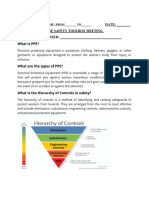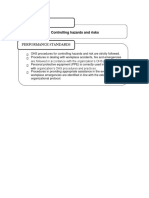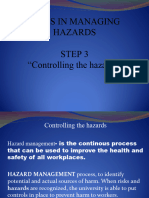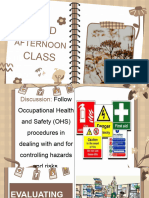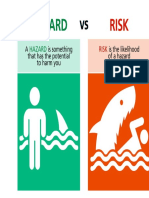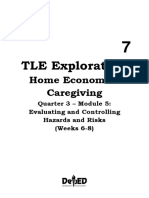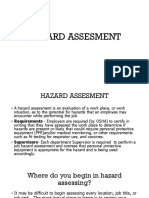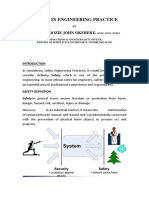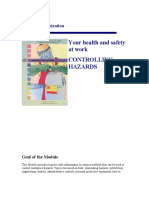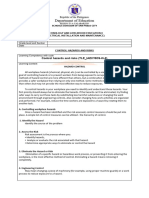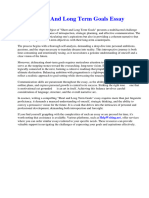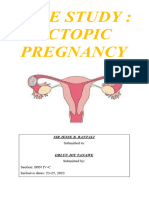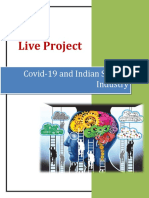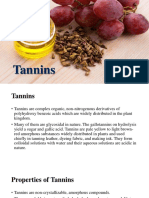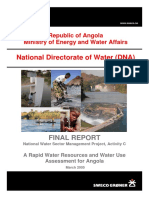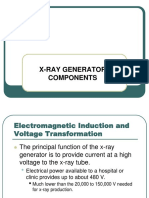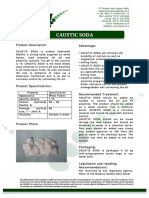Hazard.
A hazard is a potential source of harm. Substances, events, or circumstances can constitute
hazards when their nature would allow them, even just theoretically, to cause damage to
health, life, property, or any other interest of value. The probability of that harm being realized
in a specific incident, combined with the magnitude of potential harm, make up its risk.
Controls
Controls are the measures put in place to decrease the likelihood or consequences from an
unwanted event. They can:
Prevent the unwanted event or reduce the loss of control of the hazard (e.g. reduce or contain
energy release)
Reduce the effects (e.g. provide shield from hazard; event has happened but emergency
response and medical treatment reduce the severity and duration of consequences)
Hierarchy of Controls
Controlling exposures to hazards in the workplace is vital to protecting workers. The hierarchy
of controls is a way of determining which actions will best control exposures. The hierarchy of
controls has five levels of actions to reduce or remove hazards. The preferred order of action
based on general effectiveness is:
Elimination
Substitution
Engineering controls
Administrative controls
Personal protective equipment (PPE)
Using this hierarchy can lower worker exposures and reduce risk of illness or injury.
Hierarchy of Controls inverted pyramid graphic representing the page's list of general
effectiveness, from greatest to least.
� Elimination
Elimination removes the hazard at the source. This could include changing the work process to
stop using a toxic chemical, heavy object, or sharp tool. It is the preferred solution to protect
workers because no exposure can occur.
Substitution
Substitution is using a safer alternative to the source of the hazard. An example is using plant-
based printing inks as a substitute for solvent-based inks.
When considering a substitute, it’s important to compare the potential new risks of the
substitute to the original risks. This review should consider how the substitute will combine
with other agents in the workplace. Effective substitutes reduce the potential for harmful
effects and do not create new risks.
Elimination and substitution can be the most difficult actions to adopt into an existing process.
These methods are best used at the design or development stage of a work process, place, or
tool. At the development stage, elimination and substitution may be the simplest and cheapest
option. Another good opportunity to use elimination and substitution is when selecting new
equipment or procedures. Prevention through Design is an approach to proactively include
prevention when designing work equipment, tools, operations, and spaces.
Page 2
� Engineering Controls
Engineering controls reduce or prevent hazards from coming into contact with workers.
Engineering controls can include modifying equipment or the workspace, using protective
barriers, ventilation, and more. The NIOSH Engineering Controls Database has examples of
published engineering control research findings.
The most effective engineering controls:
are part of the original equipment design remove or block the hazard at the source before it
comes into contact with the worker prevent users from modifying or interfering with the
control need minimal user input for the controls to work operate correctly without interfering
with the work process or making the work process more difficult
Engineering controls can cost more upfront than administrative controls or PPE. However,
long-term operating costs tend to be lower, especially when protecting multiple workers. In
addition, engineering controls can save money in other areas of the work process or facility
operation.
Administrative Controls
Administrative controls establish work practices that reduce the duration, frequency, or
intensity of exposure to hazards. This may include:
Work process training
Job rotation
Ensuring adequate rest breaks
Limiting access to hazardous areas or machinery
Adjusting line speeds
PPE
PPE is equipment worn to minimize exposure to hazards. Examples of PPE include gloves,
safety glasses, hearing protection, hard hats, and respirators. When employees use PPE,
employers should implement a PPE program. While elements of the PPE program depend on
the work process and the identified PPE, the program should address:
Workplace hazards assessment
PPE selection and use
Inspection and replacement of damaged or worn-out PPE
Employee training
Program monitoring for continued effectiveness
Employers should not rely on PPE alone to control hazards when other effective control
options are available. PPE can be effective, but only when workers use it correctly and
consistently. PPE might seem to be less expensive than other controls, but can be costly over
time. This is especially true when used for multiple workers on a daily basis.
When other control methods are unable to reduce the hazardous exposure to safe levels,
Page 3 employers must provide PPE. This includes:
� While other controls are under development
When other controls cannot sufficiently reduce the hazardous exposure
When PPE is the only control option available
Administrative controls and PPE require significant and ongoing effort by workers and their
supervisors. They are useful when employers are in the process of implementing other control
methods from the hierarchy. Additionally, administrative controls and PPE are often applied to
existing processes where hazards are not well controlled.
Training and evaluation can help ensure selected controls are successful. Employers should
correctly train workers and supervisors on how to use controls. Workers and their supervisors
should evaluate controls on a regular basis. Regular evaluation can check whether controls are
effective in reducing workers’ exposures and identify potential improvements.
Page 4


